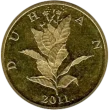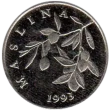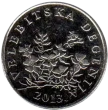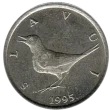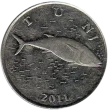Exchange your Croatian Kuna
Do you have leftover Croatian Kuna? We offer a fast and easy way to exchange both current and withdrawn Croatian Kuna banknotes and coins. Convert them into your local currency today with our quick and hassle-free exchange service.
kn - HRK
The Croatian Kuna was replaced by the Euro in 2023, marking Croatia’s full integration into the Eurozone.
Croatian Kuna Information
The Croatian Kuna (HRK) was the official currency of Croatia from 1994 until 2023 when the country officially adopted the Euro as its currency. Despite its relatively short history, the Kuna was an important symbol of Croatia’s national sovereignty and economic stability following its independence from Yugoslavia in the early 1990s. The name “Kuna” was derived from the marten, a type of weasel whose pelts were historically used as a form of currency in the region.
The Croatian Kuna was subdivided into 100 lipas, and both coins and banknotes were used for everyday transactions. Coins were issued in denominations of 1, 2, 5, 10, 20, and 50 lipa, as well as 1, 2, and 5 kuna. Banknotes were available in 10, 20, 50, 100, 200, 500, and 1,000 kuna denominations. The designs of Croatian Kuna banknotes featured important national figures, cultural landmarks, and historical symbols, reflecting the country’s rich heritage.
The Kuna played a central role in Croatia’s post-independence economy. Introduced in 1994 as part of a broader economic reform, the Kuna replaced the Croatian dinar, which had been in use since Croatia declared independence from Yugoslavia in 1991. The Kuna was introduced at a time when the country was facing significant economic challenges, including hyperinflation and the aftermath of the Croatian War of Independence. The introduction of the Kuna helped to stabilise the economy and control inflation..
The Central Bank of Croatia, known as the Croatian National Bank (Hrvatska narodna banka, HNB), was responsible for issuing the Kuna and managing the country’s monetary policy. The HNB played a key role in maintaining the stability of the currency and ensuring the country’s financial system remained robust. Over the years, Croatia pursued a series of economic reforms aimed at integrating with the European Union (EU) and preparing for eventual membership in the Eurozone.
As part of its efforts to join the Eurozone, Croatia entered the European Exchange Rate Mechanism (ERM II) in 2020, which required the Kuna to be pegged to the Euro within a specified fluctuation range. This step was a crucial part of Croatia’s preparations for adopting the Euro, and it marked the beginning of the end for the Kuna as Croatia’s national currency.
On January 1, 2023, Croatia officially adopted the Euro, becoming the 20th member of the Eurozone. The transition from the Kuna to the Euro was smooth, with a fixed exchange rate set at 7.53450 HRK to 1 EUR. The adoption of the Euro was seen as a major milestone for Croatia, symbolising its full integration into the European Union’s economic framework and providing further stability for the country’s financial system.
Although the Kuna is no longer in circulation, it remains a significant part of Croatia’s modern history. The currency is remembered fondly by many Croatians as a symbol of their country’s economic independence during its early years of statehood. Kuna banknotes and coins have become sought-after collectables, valued for their historical significance and unique designs.
In conclusion, the Croatian Kuna was an important part of Croatia’s post-independence economy, helping to stabilise the country’s finances and pave the way for its eventual adoption of the Euro. While the Kuna is no longer in use, it remains a symbol of Croatia’s economic resilience and its journey toward European integration.

